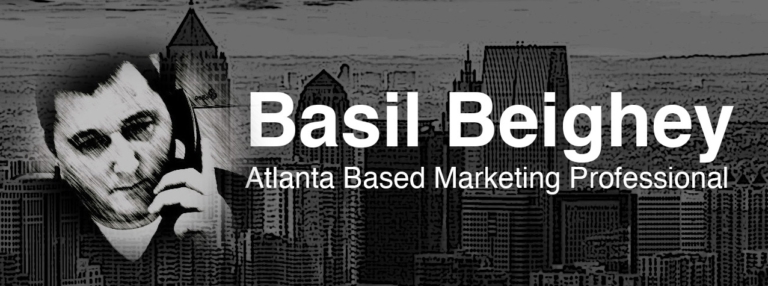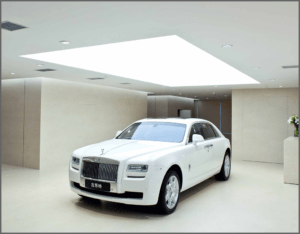White space, as discussed here, is empty space. It is referred to as “white space” because in newspapers or magazines, empty space (space with no printing), is usually the color of the paper – white. But in design, white space can refer to any empty or clear space. For instance, when you move into a new home, devoid of furniture or other things, your living room is filled with white space.
White space is usually among the last elements many designers understand and appreciate. Ironically, it is not an understatement to say that with regard to design, white space is equal to content in importance. Further, it doesn’t really matter what you’re designing, the use of white space is equally important in every media from industrial design to print advertising.
The tendency among the uninitiated is to think of white space as “nothing.” But the word “nothing” comes from the concatenation of “no thing” and “no thing” is not a bad thing. Indeed, “no thing” can be a very good thing. In the example above of the new house, think about how a clean, empty, new house makes you feel. The wide open space conveys a feeling of lightness, order, freedom, and possibility. Conversely, a house “stuffed” with big furniture, knickknacks, or junk, imparts a feeling of paralysis, confusion, chaos, or claustrophobia.
To many clients, white space represents an “opportunity cost,” or a lost opportunity to present even more content. When I worked for engineering firms, the engineers were always chiding me to fill every available space with “call outs” explaining features and benefits. But important messages and expensive products require space for “glorification.” The more space a product or message is given, the more valuable or important it is perceived to be by the viewer. Think of expensive retail boutiques. Every piece of merchandise is given lots of space. There may be only a couple dozen pairs of shoes in a high-end shoe store. The more space each pair receives, the more important and valuable is perceived to be.
White space may serve as a glorifier or a directional indicator. White space also has the effect of making content, especially technical content, less intimidating.
Space as a Glorifier
Space in all its forms suggests importance. Think of a palace with its high ceilings, wide hallways, and spacious rooms. Think of its grand vestibule or entrance. This space is not “wasted.” It sets the tone for the rest of the experience and frames the contents of that room. Especially in the West, we treasure space. The size of our homes, our cars, and our offices suggest our level of importance in society. We also treasure “personal space”, free space around us, the distance between ourselves and others in the room or car.
Likewise, white space on a printed page (or web page) glorifies content by suggesting importance – the more white space, the more important the content is perceived to be.
Space as a Directional Indicator
Proper use of white space allows designers to “direct” the reader and “manage” the visual experience. Clutter confuses, white space clarifies. Think of the way a nicely designed menu compartmentalizes appetizers, entrees, drinks, and deserts. By surrounding these areas and their corresponding headings with liberal amounts of white space, the reader can easily find the section of interest and the items within are perceived to be related. The designer can also lead the reader logically through the dining experience.
Another technique that takes this concept even further, is the ever-increasing tendency to use gray (whiter black) for print rather than black. When text is in black, the designer has “nowhere to go” with regard to emphasis. Using gray for text allows the designer to use black for only the most important content (Check out the Apple website).
In industrial design, fewer buttons and gages help to eliminate confusion. How many times have you picked up a television controller in a hotel room and said to yourself, “I just want to change the channel!” or “Raise the volume!” How many times have you looked at strange microwave oven and said to yourself, “I just want to heat up a cup of coffee!” Many times, the myriad of buttons on appliances make it impossible to accomplish even simple tasks without a period of investigation. Again, Apple has led simplification trend by eliminating all buttons, save one on devices like the iPhone. There is no confusion when you pick up an iPhone. there is only one button to press – that must be the right one. Also, notice the trend in “contextual” menus and output screens. Today, most software, only allows the viewer to see what is necessary at the time, simplifying the experience.
Space as an “Anti-Intimidator”
White space can have a calming effect on the reader. Especially in technical material, liberal amounts of white space (usually in the margins) gives the perception that the material is easier to “digest” and less work to read. Also, less text on a page gives the reader frequent rewards by allowing him/her to “turn the page” faster giving a sense of progress.
Tragically, white space is often seen as an “opportunity cost” by many left-brain thinkers. The left brain individual sees it as waste. How many Powerpoint slides have you seen packed with content to the point of rendering the entire slide gray?
It’s a designer’s responsibility to explore and champion white space at every opportunity. Push back against those who deem it an opportunity cost and illuminate the value of “no thing.”





